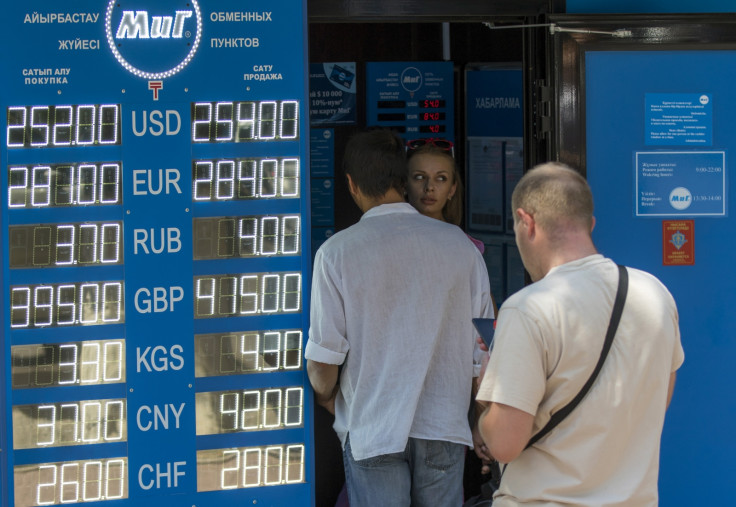Kazakh tenge plunges to all-time low after country embraces free-float system

Kazakhstan's tenge plunged as much as 26.2% to an all-time low after the country introduced a free-floating rate on 20 August, following its key trading partner China devaluing the yen significantly.
The country, which is the biggest crude exporter in Central Asia, earlier reformed its monetary policy to allow free-float trading in its currency and adapt an inflation-targeting strategy. In the free float system, market forces of supply and demand will determine the exchange rate. The country's central bank noted that it will intervene in the currency trading only if stability is threatened.
President Nursultan Nazarbayev met National Bank Governor Kairat Kelimbetov and key ministers on 19 August to form policies in line with lower oil prices.
"The head of state stressed that due to the new economic reality it is needed to adapt to oil prices at $30-40 per barrel," an official statement said.
The tenge has fallen sharply following the introduction of the free float, and is trading down 21.57% at 252.60 per US dollar as at 10.20am GMT.
Most emerging-market currencies have recently fallen, after the Chinese yuan plunged to the lowest level in two decades after its devaluation. The currencies were also affected by speculation of an interest-rate increase in the US, which spurred outflows from the emerging markets.
Kazakhstan has already been suffering from sliding oil prices and weak economic growth in China and Russia, its biggest trading partners. Russia earlier eased control on the rouble allowing it to float freely and switched to inflation targeting after spending about $90bn (£57bn, €81bn) in 2014 from reserves in an effort to combat depreciation.
Lower currency rates are beneficial for export-oriented countries, as they will gain more when money is repatriated. China's recent devaluation has sparked a currency war among its economic peers, who are afraid of the loss of export competitiveness.
Vietnam devalued the dong for a third time in 2015, raising its reference rate by 1% to 21,890 dong per US dollar. The country also widened the trading band further to 3% higher or lower from the reference rate.
© Copyright IBTimes 2025. All rights reserved.




















